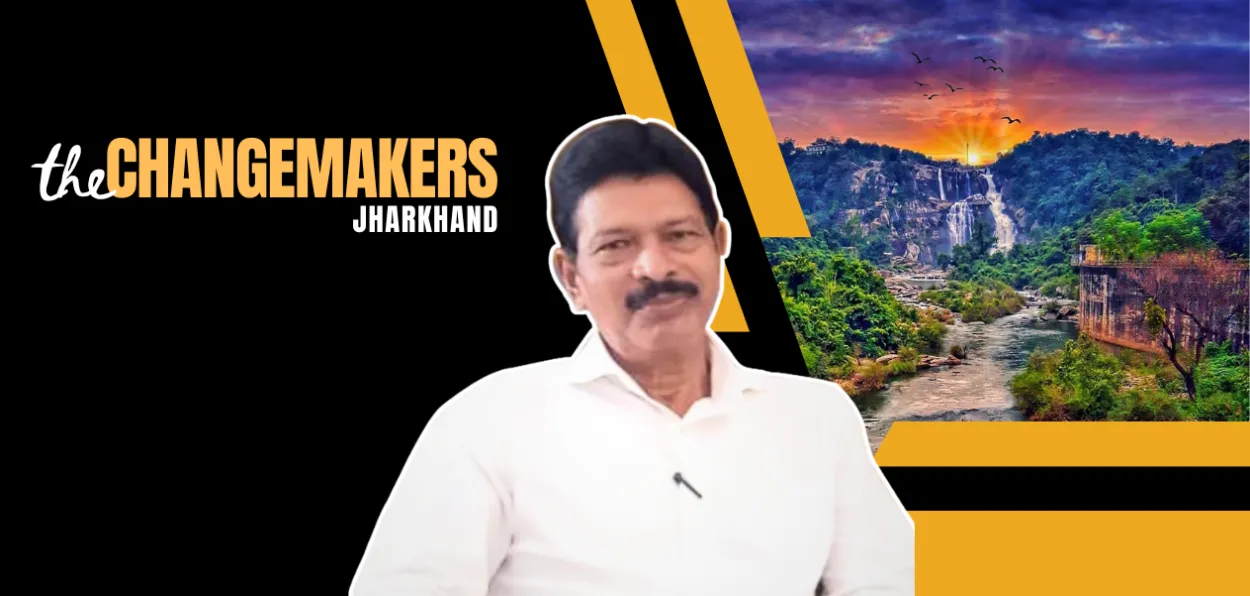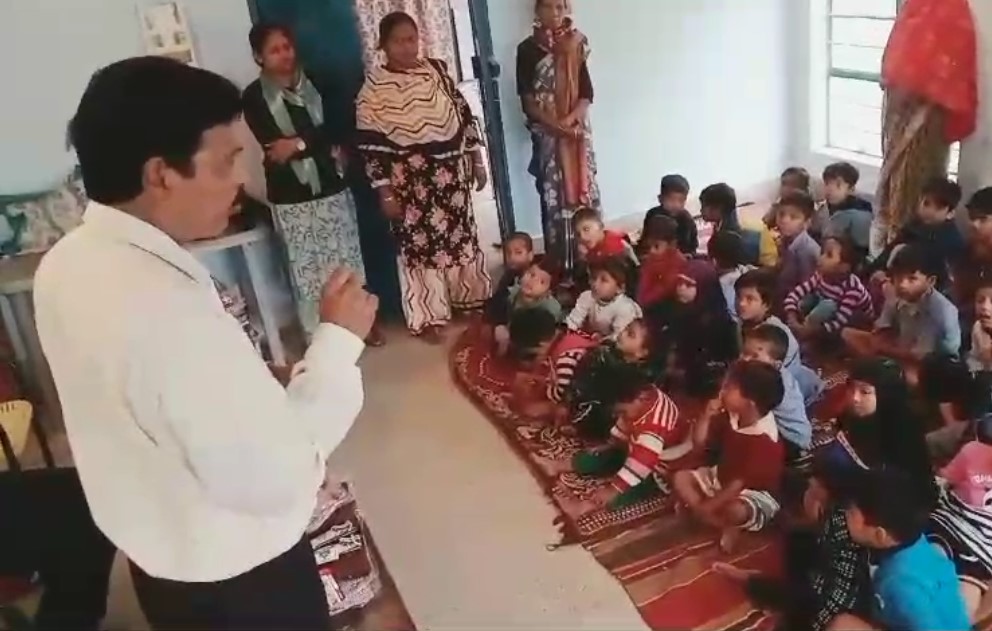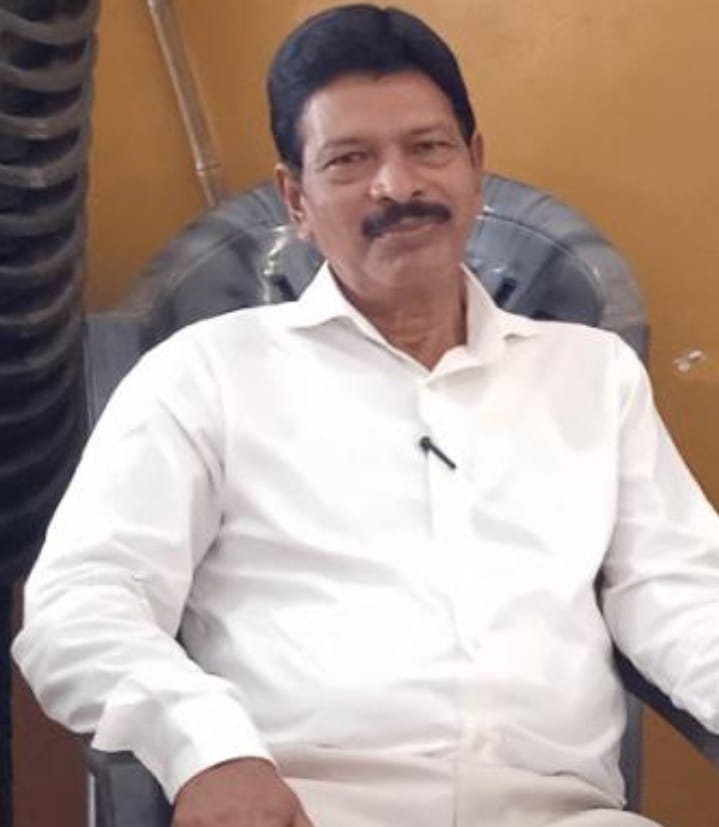
Zeb Akhtar/Ranchi
If you ever meet Mohammad Minhaj in Jharkhand’s capital, Ranchi, you might not immediately sense the quiet fire that has driven him to serve society for over four decades.
Behind his modest demeanour of this tutor’s gentle voice lies an extraordinary force — a man who has brought a new light of hope to Ranchi’s slums. Education, health, and social rights became his life’s purpose, and Minhaj continues to pursue that mission tirelessly even today.
His journey began in 1982, when Ranchi was rapidly expanding, but its slums remained shrouded in neglect. Daily wage earners, rickshaw pullers, and working-class families struggled each day just to earn enough for two meals.
For them, education was a distant dream — a luxury they could never afford. That was when Minhaj decided that education would be the foundation of lasting change. He began holding night classes in the poorest neighbourhoods. When labourers returned home exhausted after a long day, Minhaj would go to them and teach under the dim light of lanterns. He would also manage his family.
 Mohammad Minhaj with slum children
Mohammad Minhaj with slum children
It wasn’t easy. Many resisted, saying, “What’s the use of studying? We have to earn to feed ourselves.” But Minhaj would patiently explain that education was the key to freeing the next generation from poverty. Gradually, people began to understand — and soon, those lanterns in the huts weren’t just for light; they symbolised learning.
Soon, Minhaj realised that real change would come only through children’s education. He conducted a detailed survey of Ranchi’s slums — Dom Toli, Harijan Tola, Gadha Toli, Gudri Mohalla, Kadru Toli, Ilahi Nagar, and Islam Nagar — places most people avoided. Minhaj went there, met families, and launched a campaign to persuade parents to send their children to school.
Support began to grow. The YMCA stepped in to help, and later, Germany’s CVJM organisation joined the cause. His campaign slowly took shape. Often, Minhaj would personally escort children to schools, help them with admissions, and choose institutions suited to their needs.
By the 1990s, between 4,000 and 5,000 children from poor families were studying in 34 reputed schools across Ranchi. Today, many of them are doctors, engineers, professors, and government officers. When Minhaj speaks about their success, his smile outshines any medal or award.
Managing such a massive initiative was no easy task. Minhaj formed two committees within the slums — the Local Committee and the Mahila Mandal (Women’s Group). The Local Committee, led by young men, identified community needs and promoted school enrollment. The Mahila Mandal visited homes and convinced mothers about the importance of education.
The funding model was thoughtfully structured — some money came from the YMCA, some from Minhaj’s friends, and a small contribution from parents. His principle was clear: parents must share responsibility and not see education as charity.
Once education gained momentum, Minhaj turned to another pressing need — healthcare. He realised that slum dwellers had little to no access to medical facilities. He reached out to doctors, pharmacists, and medical representatives in the city, organising free health camps every month. Gradually, the initiative strengthened. Sick children and elderly residents began receiving regular treatment and medicines. Even today, these camps continue.
 After nearly two decades of work in education and health, Minhaj identified another deep-rooted challenge — lack of awareness about rights. The poor were not only uneducated and unhealthy; they were also unaware of their legal and civic entitlements. Many didn’t know that their children had a right to free education, that roadside shops couldn’t be removed arbitrarily, or that government welfare schemes were meant for them.
After nearly two decades of work in education and health, Minhaj identified another deep-rooted challenge — lack of awareness about rights. The poor were not only uneducated and unhealthy; they were also unaware of their legal and civic entitlements. Many didn’t know that their children had a right to free education, that roadside shops couldn’t be removed arbitrarily, or that government welfare schemes were meant for them.
To address this, Minhaj formed Awareness-Building Committees, each with 11 members, tasked with educating people about their rights and responsibilities. Over time, 30–35 such committees were established across Ranchi and nearby areas. These groups continue to raise awareness about education, health, employment, housing, and legal rights.
In 2018, Minhaj formally retired — but for him, retirement is merely a word. “As long as I have strength, I cannot retire,” he says. “There’s no retirement from service.” True to his words, he continues to guide committees, visit slums, and stand wherever his presence is needed.
Beyond education and health, Minhaj also addressed water scarcity in several slum areas. He initiated the construction of wells and hand pumps through a participatory model — external funds could be accepted, but residents had to contribute labour. “If people work with their own hands,” he says, “they’ll value and protect what’s built.”
Minhaj’s story proves that lasting change doesn’t require power or position — it requires passion, integrity, and patience. He started alone, but soon the community joined him. Thousands of children’s lives were transformed; education lit up slums, healthcare reached the poor, and people became aware of their rights.
ALSO READ: Tariq Alam's school in Kapali has changed the destiny of workers' children
When Minhaj smiles and says, “Whatever was done, it was the society that did it. I was only a medium,” his humility shines brighter than any recognition. These are the real heroes — the ones who quietly transform lives, light up forgotten corners of society, and then step back, giving credit to everyone else.
Watch the Video:
